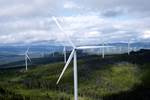RWC delivers composite frac plugs for downhole environments
Filament-wound fiberglass/epoxy frac plug billets, developed as part of a contract with an oilfield service company, address the very demanding performance needs of oil and gas.
Ultra-high performance frac plug billets. Source (All Images) | Rock West Composites (RWC)
On April 28, Rock West Composites (RWC, San Diego, Calif., U.S.) says that it begins delivery of ultra-high-performance frac plug billets to an oilfield service company that is a major supplier to the hydraulic fracturing market. RWC has developed a composite material for frac plugs that can withstand cyclical testing at 12,000 psi and 250°F without failure.
This ultra-high-performance frac plug material has been in development for more than a year, RWC reports. It is made of filament-wound fiberglass composite with a custom epoxy resin. The plugs have passed rigorous testing in RWC’s laboratory and the customer’s in situ downhole environments. Each lot is proof tested to guarantee performance for these extreme applications.
Frac plug filament winding process.
RWC manufactures and tests the plug billets at its facility in West Jordan, Utah, the location of its filament winding center. This facility has 27 spindles across multiple winders and the capacity to manufacture up to 6,000 billet tubes per month. RWC anticipates significant market demand for this product due to the increasing challenges oilfield service companies face with downhole operations.
“We brought our filament winding expertise to the table. Our engineering team works on highly demanding applications, including space and aerospace, so we took that knowledge of material performance downhole,” says Adam Creer, commercial segment director. “We are glad to have partnered with our customer to meet their very demanding requirements and develop our own technology that solves an industry-wide challenge.”
Related Content
-
ECOHYDRO project to enable recyclable composites for hydrogen storage
With the involvement of two schools from the Institut Mines-Télécom, the 4-year project aims to improve the intrinsic properties of a composite material based on Elium via four concrete demonstrators.
-
ATA Industrial Group report evaluates the state of the global carbon fiber market
Carbon fiber composites market report provides statistics, analyses and trends regarding 2023 demand in China and around the world.
-
Partners recycle A350 composite production waste into adjustable-length rods for MFFD
Herone, Spiral RTC, Teijin Carbon Europe and Collins Aerospace Almere recycle A350 thermoplastic composite clips/cleats waste into rods for the all-thermoplastic composite Multifunctional Fuselage Demonstrator’s crown.


